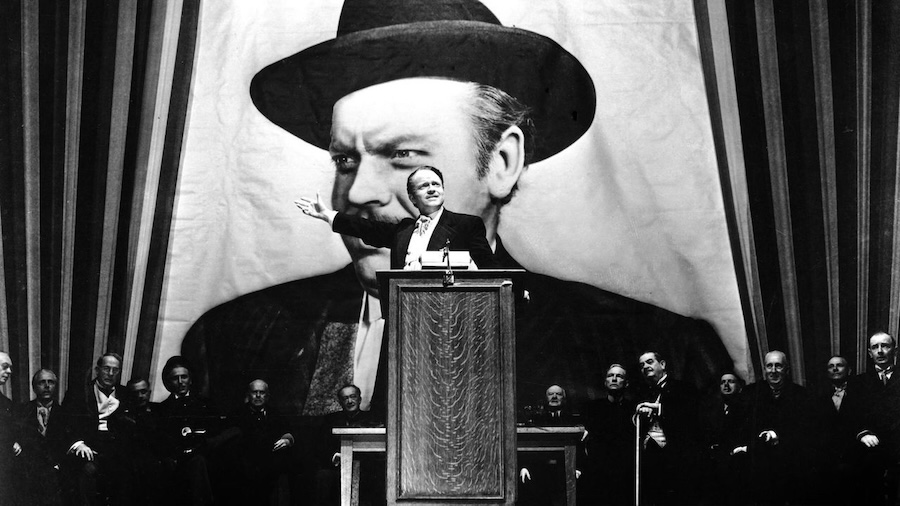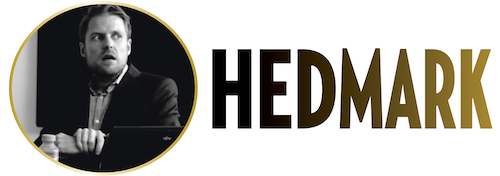
365 DAYS IN THE MAKING – AND EVERY MINUTE OF IT AN EXCITING NEW THRILL FOR YOU!

When Sight and Sound recently polled critics all over the world for another list of greatest films, there were dramatic changes. Jeanne Dielman (1975) came out of nowhere and rose to the top, while the traditional masterpieces had to take a backseat, including Citizen Kane, which ended up third. Kane usually tops these lists. Jeanne Dielman’s success can partly be explained by a a more varied group of critics and a sense of fatigue; the time was right for a new type of film to take the spotlight. Still, there’s no doubt that Citizen Kane remains immensely influential.
Holding a snow globe in his hand
The story begins with the death of the vastly wealthy newspaper tycoon Charles Foster Kane (Orson Welles). As he passes away in his Florida mansion called Xanadu, he holds a snow globe in his hand and utters one last word: ”Rosebud”. The news reaches every corner of the world and a reporter, Jerry Thompson (William Alland), is tasked with finding out what ”Rosebud” means. When he approaches Kane’s second wife, Susan Alexander (Dorothy Comingore), he finds an alcoholic who runs a nightclub and has no interest in talking to journalists. Thompson then gets access to the archives of a banker who became Kane’s legal guardian when he was a boy…
Terrifying a nation
It’s kind of unbelievable how RKO dared go all in on Orson Welles the way they did here. After all, he was very young. But he had already proven his mettle, having directed and starred in innovative plays for the Mercury Theatre, a repertory company he founded together with John Houseman. And then in 1938, he terrified a whole nation with his radio production of H.G. Wells’s ”War of the Worlds”.
Obviously, the young man had a flair for the dramatic. He started receiving offers from Hollywood as early as 1936 and when RKO finally got him to sign a contract, he was granted complete artistic control. Welles became interested in trying to find the soul and motivation within an American business magnate and invented Charles Foster Kane, partly inspired by William Randolph Hearst, who found the film so insulting to him and his mistress Marion Davies that he tried to suppress it by banning reviews in his newspapers and screenings of the film in his movie theaters. According to Welles, Hearst always made too much out of the similarities, but it was undeniably a sensitive subject.
The authorship of the screenplay became a source of controversy, leaving Welles and Herman J. Mankiewicz anything but friends after the process, but it is a brilliantly told story, building Kane’s life in perfectly timed flashbacks, ending with a now-classic revelation that goes straight to the heart of Kane’s tragedy.
The look of the film is stunning thanks to cinematographer Gregg Toland’s use of light and shadows.
Citizen Kane has sometimes been described as a film of spectacular technical innovation, but it isn’t really true. Most of the techniques and tricks employed here were used in the past, but Welles’s brilliance lay in how he brought them all together in one film, breaking traditional Hollywood rules. The look of the film is stunning thanks to cinematographer Gregg Toland’s use of light and shadows. Deep-focus compositions and low-angle shots that make the characters look larger than life helped turn Citizen Kane into such an admired film, especially when French critics ”rediscovered” it in the 1950s, elevating it to its current status.
Welles’s convincing performance as an iconic, much older man of authority; Bernard Herrmann’s foreboding music score; the film’s modern feel and dreamlike sequences… every ingredient here is topnotch. And it also still feels highly relevant, especially at a time when Donald Trump, a man who idolizes Charles Foster Kane, still poses a threat to the U.S. and the world.
Citizen Kane 1941-U.S. 119 min. B/W. Produced and directed by Orson Welles. Screenplay: Herman J. Mankiewicz, Orson Welles. Cinematography: Gregg Toland. Music: Bernard Herrmann. Editing: Robert Wise. Cast: Orson Welles (Charles Foster Kane), Joseph Cotten (Jedediah Leland), Everett Sloane (Mr. Bernstein), Dorothy Comingore (Susan Alexander Kane), Agnes Moorehead, Ray Collins… Alan Ladd.
Trivia: Cotten’s first film. The making of the film was depicted in the TV movie RKO 281 (1999) and the films The Battle Over Citizen Kane (1996) and Mank (2020).
Oscar: Best Original Screenplay.
Last word: “I’d been nursing an old notion – the idea of telling the same thing several times – and showing exactly the same scene from wholly different points of view. Basically, the idea Rashomon used later on. Mank liked it, so we started searching for the man it was going to be about. Some big American figure – couldn’t be a politician, because you’d have to pinpoint him. Howard Hughes was the first idea. But we got pretty quickly to the press lords […] After mutual agreements on story line and character, Mank went off with Houseman and did his version, while I stayed in Hollywood and wrote mine. At the end, naturally, I was the one who was making the picture, after all – who had to make the decisions. I used what I wanted of Mank’s and, rightly or wrongly, kept what I liked of my own.” (Welles, interview with Peter Bogdanovich)
